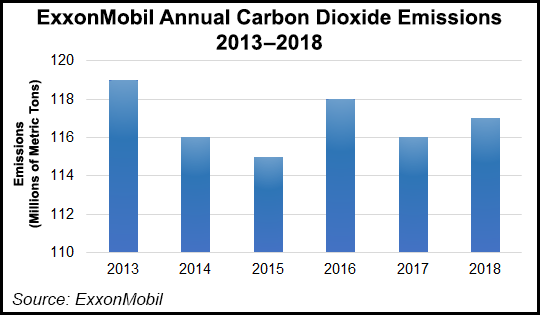ExxonMobil, Princeton Up Partnership to Discover Ways to Reduce CO2, Improve Energy Technology

Looking for ways to lower emissions and improve energy technologies will continue under a renewed collaboration by ExxonMobil and Princeton University’s Andlinger Center for Energy and the Environment.
The new five-year agreement, which builds on ExxonMobil’s participation beginning in 2015 in Princeton’s E-filliates Partnership, aims to help accelerate research, development and deployment of technologies that among other things could reduce carbon dioxide (CO2) emissions.
“We collaborate with leading universities and institutions around the world to find meaningful and scalable solutions to develop lower-emission technologies” said Vice President Vijay Swarup, who oversees research and development for ExxonMobil Research and Engineering Co.
Andlinger director Yueh-Lin (Lynn) Loo said partnering with other companies “is a critical piece of translating fundamental knowledge and discoveries into real-world impact. We challenge ExxonMobil scientists to explore the fundamental scientific questions that underpin technology development in new ways, and they challenge our scientists to think about the practical considerations of scaling technologies.
“It’s a win-win and ultimately helps us carry out a core tenet of our mission, which is to reduce emissions globally while improving access to energy around the world.”
ExxonMobil has been using carbon capture in its operations for the last 20 years, an area that Princeton is advancing to better understand how stored CO2 flows within rocks and interacts with minerals.
Princeton scientists are also working with ExxonMobil to develop carbonate fuel cells, an area in which ExxonMobil began collaborating four years ago with FuelCell Energy Inc. The Fuel Cell partnership is examining ways to capture CO2 from industrial facilities and electric power generation.
Since 2000, ExxonMobil said it has invested about $10 billion in projects to research, develop and deploy lower-emission energy solutions. The company also has expanded its collaborative efforts with more than 80 universities, five energy centers and multiple private sector partners around the world to explore next-generation energy technologies.
© 2024 Natural Gas Intelligence. All rights reserved.
ISSN © 1532-1231 | ISSN © 2577-9877 |


